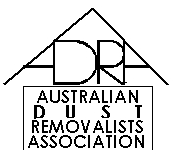 Code of Practice for Ceiling Code of Practice for Ceiling
Dust Removal
CONTAMINATED DUSTS
Triggers for Ceiling Dust Removal
The extent of dust removal will be dependent on the extent of the
disturbance and the proposed usage of the space following the work. For example, triggers
for full dust removal would include:-
- Demolishing ceiling or cavity walls
- Cutting in to ceilings for installation of an attic ladder
- Adding a second storey extension
and triggers for at least partial dust removal would include:-
- Cutting in to ceilings for installation of a skylight, light fitting, ceiling
ventilation fan, etc
- Installing insulation or new electrical wiring
- Decision by the building owner based on concerns about health risks arising from dust
leakage through cornices, picture rails, skirting boards, architraves, window and door
frames, wall vents, ceiling vents, fire places and the like, or future storms or other
trauma which could damage the ceiling.
Sequence of Events
In order to avoid contaminated dust from the ceiling areas spreading to other parts of
the building during building work, seal all vents, cracks and fissures in and around the
ceiling and walls before commencing work in the ceiling cavity.
All other building work resulting in penetrations to ceilings and/or walls is to be
carried out after the dust removal had been completed.
Minimising the Creation and Spread of Lead
Contaminated Ceiling Dust
The Contractor shall adhere to the following general procedure for ceiling space
decontamination:
- All contractors should exercise relevant OHS procedures to comply with relevant NSW
WorkCover Authority legislation;
- All occupants are advised to vacate the premises during the ceiling dust removal.
Children in particular should be absent during the work;
- Sealing of all cracks/fissures that may permit gross ingress of ceiling dust into
building is the responsibility of the home owner. This includes the temporary sealing of
the ceiling access point;
- Entry into ceiling space is generally via a temporary opening in the roof;
- At time of quoting the contractor should furnish to the home owner a fact sheet on
ceiling dust by the Lead Group
- All employees directly involved in the removal shall wear personal protective equipment
conforming to AS1716 (Respiratory Protective Devices) and be sufficiently trained in their
use;
- All employees directly involved in the removal shall wear disposable overalls fitted
with hoods and must at all times keep their suits fully on and in good condition;
- All employees directly involved in the removal shall undergo personal biological
monitoring for exposure to contaminants in ceiling dust
- Records shall be kept of the results of the employees personal biological monitoring
- All dust is to be removed using HEPA fitted vacuum cleaners. The cleaning unit and the
dust collection system would preferably remain external of the building;
- At no time is dust to be swept or showelled into bags;
- Removal of dust shall start from the roof entry point and work shall be continued from
here towards the edge of the ceiling so as to minimise the disturbance of the dust;
- Surfaces with contaminated dust to be removed is to be identified to the home owner at
time of quoting;
- All collected dust is to be contained in sealed drums or 200 um (micrometre) plastic
bags and transported by EPA licensed transporters and disposed of at an EPA licensed waste
facility;
- All employees involved in dust removal shall adopt good hygiene practices and ensure
hands and faces are thoroughly washed prior to smoking or eating;
- Smoking is not allowed within the confines of the premises;
- All employees entering the ceiling space within 1 hour of dust removal shall wear
approved respiratory protection conforming to AS1716;
- Personal decontamination procedures are to be followed including disposal of used
overalls with the dust and washing hands and face with clean water outside the building
before leaving the site, with all waste water directed to sewer;
- All contractors should have Certificate of Currencies for a minimum public liability
cover of $5,000,000 and relevant workers compensation insurance.
Quality Control Procedures
Any sub-contractor employed for ceiling dust removal must be accredited by ADRA
(Australian Dust Removalists Association) to work with such hazardous substances and be
familiar with this Code of Practice. The Contractor shall ensure all sites are inspected
prior to commencing any work and the sites’ condition recorded and photographed if
necessary. Particular attention shall be given to the presence of any dust.
The Contractor shall inspect and ensure that all openings into ceiling cavity are
adequately sealed before commencing dust removal.
The Contractor shall provide a competent supervisor to inspect the site at the
completion of the days work to ensure the site is left secure and cleaned up thoroughly.
This shall be performed whilst the employees or sub contractors are still present in the
case of further clean up being required.
Waste Management
The Contractor shall handle, transport and dispose of dust waste in accordance with the
NSW EPA guidelines on classification and management of waste.
Disclaimer
No responsibility, either direct or implied, is assumed by ADRA for omissions or
duplications by the Contractor or his sub-Contractors due to real or alleged error in this
Code of Practice. The information contained in this Code of Practice was compiled using
the information available at the time of writing.
|
 Code of Practice for Ceiling
Code of Practice for Ceiling